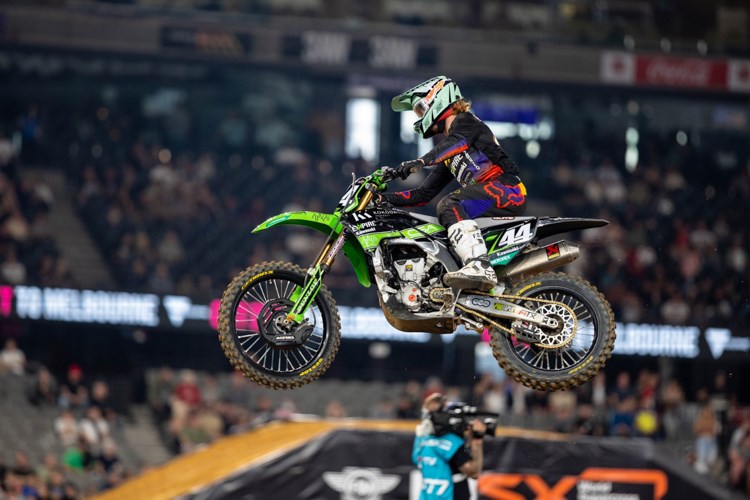LATEST NEWS |
Training of a professional Motocross and Supercross racer in Australia
Becoming a professional Motocross and Supercross athlete here in Australia is no easy task, especially with training requirements and demands that are constantly evolving. There are no secrets, all racers competing at national level both as factory teams and privateers are all “putting in the work”.
A lot of this is down to an increase in popularity for athletes reinvesting into both riding and physical training coaches. To stay at the cutting edge of our sport, riders need to be both versatile and innovative when it comes to their programs.
This ensures that they’re achieving their best performance on race day. Training can vary throughout the year including preseason, physical testing, program modifications and updates which can then be monitored through data and figures.
Physical testing and preseason
Motocross is known to be one of the most physically demanding sports in the world. With heart rates in the red zone (180 beats per minute or more), and navigating a 100kg motorcycle for 30 minutes against 39 other riders; it's easy to see why.
So when it comes to pre season and physical testing, some popular tools used by riders to assess fitness levels may include, VO2 max tests, (a maximal exercise analysing how much oxygen you can consume and use during exercise) or functional threshold tests (a physical assessment intended to evaluate your Functional Threshold Power).
These tests are great for a racer, teams and trainers to ensure their rider is at an adequate level of fitness and identify any weakness that may affect riding ability. Physical tests can be completed throughout different stages of the season to ensure programs are working or need to be tweaked.
Training volumes in the pre season (January through March) typically consist of increased cycling, strength and riding. This circa eight week period is typically used as a time for building and then a taper occurs coming into the race season which is intended to reduce the risk of injury.
Reinvesting in trainers
As you’d expect, days on the motorcycle as a professional rider look significantly different to the hobby type of ‘weekend warrior’ or junior riding done whilst still at work or school.
The days of joyriding on smooth tracks with friends are a distant memory, instead these training sessions consist of 4-5 days a week on rough, national spec tracks with a trainer and somedays mechanic.
Although still fun, these riding sessions have a goal, whether that be sprint speed, technique or race simulation with every lap time recorded throughout the day.
My riding coach is Ross Beaton from Beatons Proforumla, which is based in Gippsland, Victoria. Considering that Victoria is my home state, this was an easy transition.
From the outset, Ross and I gelled really well together, and I’m now in my third season with him. Ross helps me identify my weakness as a rider and racer while holding me accountable to improve day in day out. Full time riding coaches have become a popular option nationwide, and in every state, you can find coaches working with numerous top riders together.
Off bike training
The importance of physical training off of the motorcycle has increased significantly in the last ten years. It’s to the point now where if you aren’t actively trying to physically improve on and off the bike seven days a week, you’re being left behind. These days, it’s no longer a question of who’s fit and who isn’t at a national event, but instead, you’re left wondering who’s the fittest!
The benefits of being in better physical shape, and a more well-rounded athlete eclipses competition itself, allowing riders to be more focused.
Not only does this improve riding on a holistic level, but conditions riders to recover from injury faster.
In 2020 I began working with Jon Park as my physical conditioning trainer. This consists of a seven day program including strength, mobility, cardio and recovery sessions. Constant feedback and communication between rider and trainer is required. This is to check in on how the body is reacting to training on and off of the motorcycle as seat time is the main priority.
Last but not least, enjoy yourself. Everyone works differently, but I find that I ride at my best when I’m having fun.There are always going to be moments where it isn’t enjoyable but understanding that the hard times at the track and in the gym are part of the process. When it comes to learning and getting better, this mindset is crucial.
The group of people that surrounds you is one aspect of what drives peak performance, but remembering why you started it all does the same.
Every rider is different, but with my trainers we are able to work out what works for me to get the most out of my performance each weekend. These methods are constantly as we are always striving to be better.


